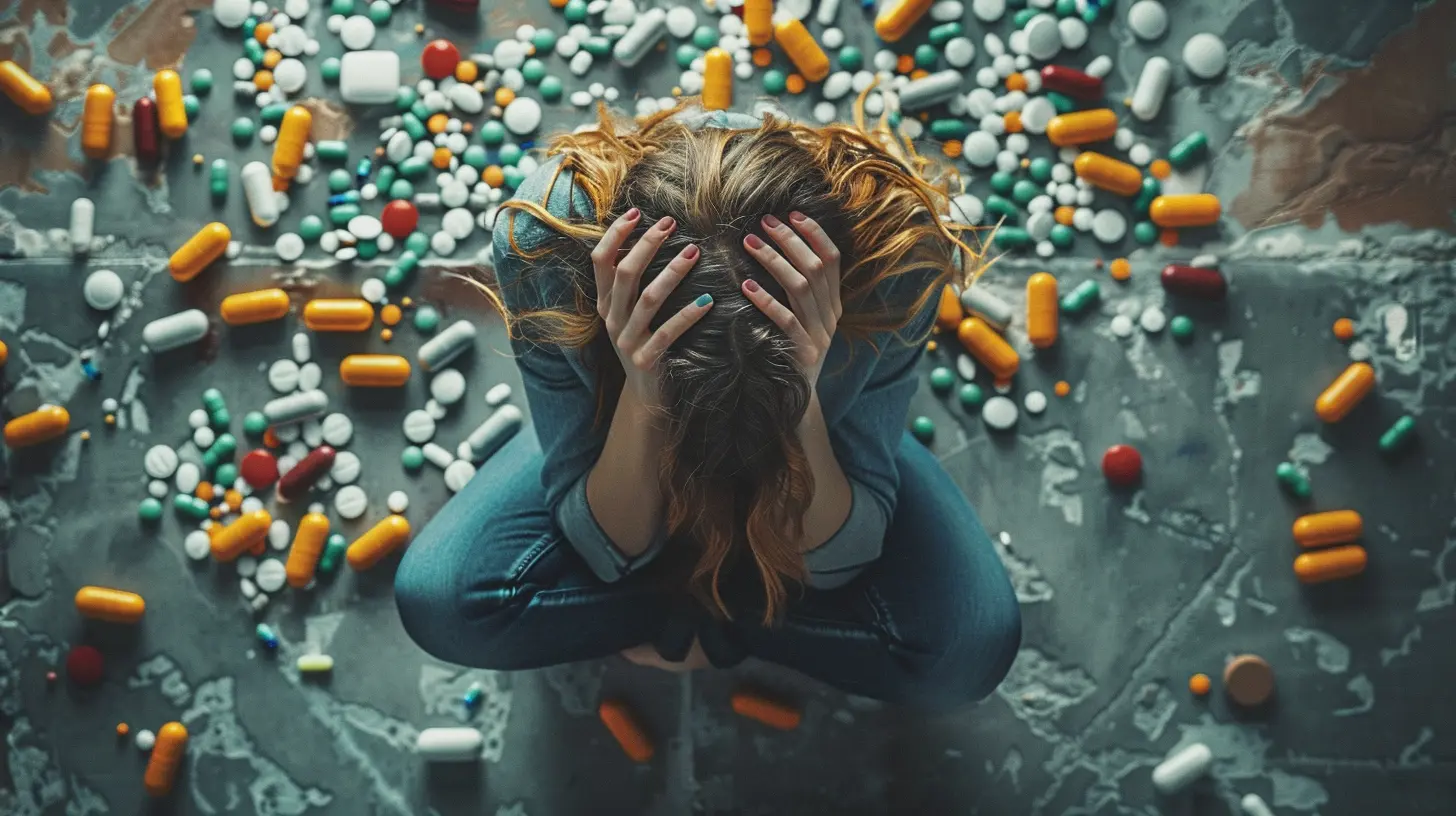How Substance Use Disorders Co-Occur with Mental Illness
3 October 2025
Substance use disorders (SUDs) and mental illnesses often go hand in hand. If you've ever wondered why so many people struggling with addiction also deal with anxiety, depression, or other mental health issues, you're not alone. This connection is more than just a coincidence—it’s a deeply intertwined relationship that affects millions of lives.
But why do these conditions often exist together? Is one causing the other, or is there something deeper at play? Let's dive into the details of how substance use disorders co-occur with mental illness, why this happens, and what can be done about it.

Understanding Substance Use Disorders and Mental Illness
Before we explore how these conditions overlap, let’s define them:- Substance Use Disorder (SUD): A medical condition where a person compulsively uses drugs or alcohol despite the negative consequences. It can range from mild to severe and often leads to significant impairment in daily life.
- Mental Illness: A broad term covering conditions that affect a person's thinking, emotions, and behavior. This includes anxiety disorders, depression, bipolar disorder, schizophrenia, and more.
Now, the real challenge arises when both conditions exist together, known as co-occurring disorders or dual diagnosis. This complicated situation makes treatment more challenging but not impossible.

The Strong Link Between Substance Use and Mental Illness
The relationship between substance use and mental health is bidirectional. This means that one can contribute to the development of the other. Here’s how:1. Self-Medication: A Dangerous Coping Mechanism
Many people with mental health issues turn to drugs or alcohol for relief. Feeling anxious? A drink might help—at least for the moment. Struggling with depression? Maybe a substance provides temporary escape. This is known as self-medication, and while it may bring short-term relief, it worsens the underlying issue in the long run.For example, someone with anxiety might rely on alcohol to calm their nerves. However, over time, alcohol disrupts brain chemistry, making anxiety worse when sober. This creates a vicious cycle of substance dependence.
2. Substance Use Can Trigger Mental Illness
On the flip side, drug and alcohol abuse can actually contribute to the development of mental health disorders. Some substances alter brain chemistry in ways that increase the risk of depression, anxiety, paranoia, and even psychosis.Take marijuana, for instance. While some use it for relaxation, regular heavy use—especially in young people—has been linked to an increased risk of developing schizophrenia. Similarly, methamphetamine can cause severe anxiety and hallucinations, mimicking the symptoms of psychotic disorders.
3. Shared Risk Factors Make Some People More Vulnerable
Certain factors make people more prone to both substance use and mental illness. These include:- Genetics: A family history of addiction or mental illness increases the likelihood of developing one or both conditions.
- Brain Chemistry: Imbalances in neurotransmitters like dopamine and serotonin can make someone more susceptible to both disorders.
- Trauma and Stress: Childhood trauma, chronic stress, or PTSD can push individuals toward both substance use and mental health struggles.
- Environment and Upbringing: Growing up in a household where substance abuse is normalized or where mental illness is untreated can shape future behaviors.
4. The Impact of Withdrawal and Chronic Use
Long-term drug or alcohol use can lead to substance-induced mental disorders. For example, prolonged alcohol use can bring about depression, and stimulant abuse (such as cocaine or meth) can cause anxiety or paranoia.Additionally, withdrawal from certain substances can mimic psychiatric conditions. Opioid withdrawal, for example, often comes with extreme depression and anxiety, making it difficult for individuals to distinguish between withdrawal symptoms and an actual mental health disorder.

Why Co-Occurring Disorders Are Hard to Treat
Having both a substance use disorder and a mental illness poses unique challenges when seeking treatment.1. Symptoms Overlap, Making Diagnosis Tricky
Many symptoms of substance use disorders and mental illnesses mirror each other. For example, both depression and opioid withdrawal can cause fatigue, mood swings, and sleeping problems. This overlap makes it tough for doctors to pinpoint the root cause of the issue.2. Treatment Approaches Can Clash
Traditional treatment for mental illness often involves medication, but some psychiatric drugs can interfere with addiction recovery. For example, benzodiazepines (used for anxiety) can be addictive themselves, making them risky for someone with a history of substance abuse.3. Stigma and Misinformation
Many people struggling with co-occurring disorders face judgment from both the addiction recovery and mental health communities. Someone in addiction recovery may feel hesitant to seek psychiatric help, fearing they’ll be seen as weak or unable to cope.
Effective Treatment for Co-Occurring Disorders
The good news? There is hope. With the right approach, people with co-occurring disorders can lead fulfilling lives. Here’s what effective treatment looks like:1. Integrated Treatment: Addressing Both Issues Together
The best approach to treating co-occurring disorders is integrated treatment, where both addiction and mental health conditions are treated simultaneously. This often includes:- Cognitive Behavioral Therapy (CBT): Helps individuals recognize and change negative thought patterns contributing to both substance use and mental illness.
- Medication-Assisted Treatment (MAT): Sometimes necessary for treating conditions like depression or opioid addiction, using medications such as antidepressants or buprenorphine.
- Support Groups: Groups like Dual Recovery Anonymous (DRA) provide peer support for those facing both substance use and mental health challenges.
2. Addressing Underlying Trauma
Many co-occurring disorders stem from past trauma. Therapy approaches like Eye Movement Desensitization and Reprocessing (EMDR) and trauma-focused CBT can be game-changers.3. Lifestyle Changes and Holistic Approaches
Recovery isn’t just about therapy and medication. A healthy lifestyle plays a major role too:- Exercise: Studies show regular physical activity can reduce symptoms of both depression and substance cravings.
- Mindfulness and Meditation: Practices like yoga and meditation help manage stress and emotions, reducing the urge to self-medicate.
- Healthy Relationships: Surrounding oneself with a supportive network can make all the difference in maintaining recovery.
Final Thoughts
Living with both a mental illness and a substance use disorder is tough, but it’s not a battle anyone has to fight alone. The connection between these disorders is complex, but with the right support, recovery is possible.If you or someone you know is struggling, reaching out for professional help is the first step toward healing. There’s no shame in seeking treatment—only strength in taking control of your well-being.
all images in this post were generated using AI tools
Category:
Psychiatric DisordersAuthor:

Paulina Sanders
Discussion
rate this article
1 comments
Sylvan McIntosh
Thank you for shedding light on the complex relationship between substance use disorders and mental illness. A compassionate understanding of these co-occurring issues is essential for fostering healing and supporting those who struggle. Your insights are invaluable.
October 28, 2025 at 4:40 AM

Paulina Sanders
Thank you for your kind words! I'm glad you found the insights valuable. Compassionate understanding is indeed key to supporting those affected.


